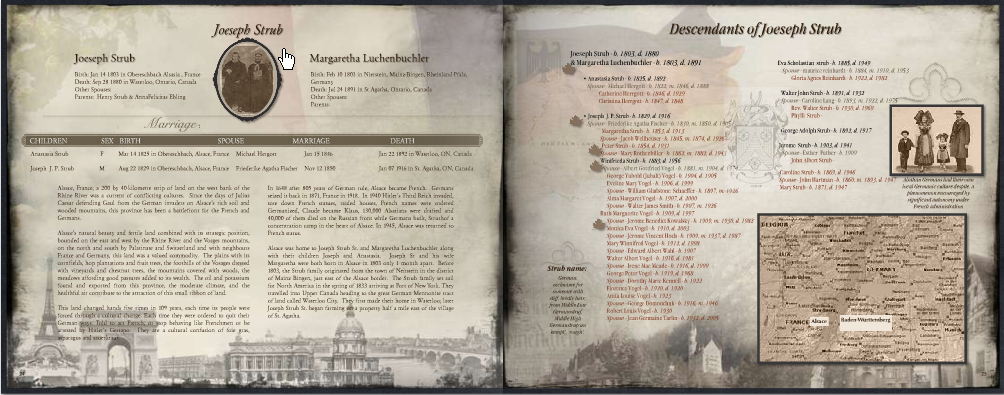Do you dream of creating a family history book?
Has your book been just that, a dream?
I’m a big believer that to accomplish your dreams you need goals and a plan.
For those of you who are dreaming about creating a family history book in 2018, our next four posts are designed with you in mind. We are going to close out 2017 and begin 2018 with developing a plan to turn your family history book dream into a reality.
Over December and January, we will cover the following in a 4-part series.
Step One. Identify your dream and the purpose behind the dream
Step Two. Identify and set your goals needed to make your family history book a reality
Step Three. Make an action plan and timeline for accomplishing these goals.
Step Four. Set up the daily habits required to accomplish your goals.
Each part will come with a downloadable template to help you flesh out your plan on paper.
Today, we start with Part 1 – The Dream, and its Purpose.
Part 1 – The Dream and What Drives Your Dream
Your dream is to write a family history book. But why do you want to write a family history book? It’s not enough to just have the idea. You must also identify the purpose and passion behind your vision, any vision including creating a family history book.
When you have a clear sense of the purpose of your project it enables you to focus your efforts. It compels you to stay on task and push forward when the work might become difficult or overwhelming.
Knowing why you want to create a family history book is an essential first step in figuring out how to achieve this dream.
Only when you know the why will you find the courage to take risks needed to make it happened, to stay motivated when the road becomes tough and to take on a challenging yet very rewarding trajectory.
Why I write family history stories and books?
To help you identify your own purpose behind wanting to create a family history book I thought I would share some of the reasons that got me started in writing family history but also why I continue to make it a significant part of my life.
- I believe that stories can close the gap between our ancestors and our families. We’ve all tried to share our family history with our loved ones. We’ve all been met with the eye rolls. I believe that in creating a family history book that is entertaining and compelling, I could overcome their resistance and close this gap.
- I was worried about spending years researching my family history, acquiring boxes and files full of information only to have it lost or be packed away when I left this world. I wanted to create a book that was going to be a representation of my work. It would not be just a legacy of my ancestors but my legacy of years of research and dedication to my passion for genealogy.
- I wanted to create something that had longevity, a book that was going to sit proudly on all my relative’s bookshelves. It wanted a book that they would be proud to have displayed on their coffee table. I wanted a book that they would reference from time to time over the years and a book that would be passed on for generations to come.
These were the three significant purposes that fed my dream to create a family history book. You may have other reasons for wanting to create a book. The point here is to acknowledge those motives. These larger purposes will feed you throughout your writing journey. When you have a drive and desire for your project, you’re more likely to stick with it.
The Power of Writing Down Your Dreams and Goals
An essential component in making your dreams a reality is to write them down. There is considerable evidence to support the fact if you write down your thoughts and goals you are more likely to transform those desires into reality. It also suggests that if you share your written goals with a friend who believes in your ability to succeed it will aid you in meeting with success.
Therefore, each step along the way in this 4-part series, I will provide you with a template you can download and print off and fill in so that you have your dream, purposes, goals and action steps all written down. Not only will this help you take your ideas from the thinking stage to putting them on paper and making them concrete you’ll also have a written plan to help you proceed.
Let’s start by identifying your dream to create a family history book and the purpose behind your vision. Download the Dream and Purpose Template and fill it in.
Your Dream and Purpose Template
Watch for our next installment as we take your dream and begin to identify the goals needed to make it a reality.




I enjoyed reading Part 1. Thank you for inspiring me to once again ‘try’.
I would love the guilford u3a group to do this. It would be a good challenge for 2018.
im so excited for these preliminary steps I dont want to stay on my previous scatterbrained, go around in circles track that I’ve been on for the last 2 years!